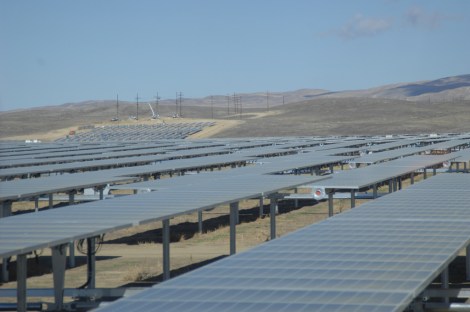At first glance, California seems like the greenest state in the union. Last week, the state’s voters overwhelmingly passed Proposition 39, which will close a business tax loophole and send billions to clean energy programs. This week, the state is holding the first auction under its landmark cap-and-trade program. Reuters reports that California is “poised to double down on its investments” in the clean energy sector
“We put our money where our mouths are,” said Mary Nichols, chair of the California Air Resources Board, the agency charged with implementing the state’s cap-and-trade system.
“We back up what we do in regulation by shifting subsidies from things that pollute and are inefficient to things that are more efficient and make our state more resilient,” she said …
California has long been a bellwether for efforts by states and local governments eager to address climate change. In 2006, Governor Arnold Schwarzenegger signed into law a bill that requires the state to reduce greenhouse gas emissions to 1990 levels by 2020. That law survived a challenge at the polls two years ago, when Californians overwhelmingly defeated an oil industry-backed measure to roll it back.
Hearings will begin in January on how exactly to spend the cash generated by Prop 39, some of which is specifically set aside for “new private sector jobs improving the energy efficiency of commercial and residential buildings” and job training “on energy efficiency and clean energy projects.”

USFWS
California: Where solar sprawls as much as the suburbs.
So yes, California is pretty great! But as any Golden State resident could tell you, this is a complicated place full of contradictions. A defeated GMO labeling bill. Poisoned water. And so, so many cars.
While Californians may be progressive in some respects, we’re still clinging to the suburban dream. A recent report by Arthur C. Nelson for the Urban Land Institute argues that Californians are gravitating toward smaller lots and multi-family living, but demographer Wendell Cox disagrees. He finds that the California dream hasn’t changed much over the last 60 years.
In contrast to Professor Nelson’s estimates, the demand data indicates a strong continuing preference among Californians for detached housing on conventional lots. From 2000 to 2008 …, 51 percent of the new occupied housing in [California’s largest four planning regions] is estimated to have been detached on conventional lots. This is more than three times the 16% demand estimate in Professor Nelson’s data. In fact, the actual demand was higher than the 2000 supply (42%), indicating that the demand for detached houses on conventional lots has increased.
If there is a sea change, it would appear to be in multi-family housing. In contrast with the 62% share for multi-family dwellings modeled by Nelson, the actual demand indicated in the census tract data was two-thirds less, at 19%, well below the supply of 43 percent in 2000. This suggests a tanking of demand for multi-family housing, even as builders, in California and elsewhere, put more product on the market.
And while 87 percent of people in California’s major metro areas live within walking distance of transit, most jobs aren’t reachable within a 45-minute commute without a private car.
Though the increase in demand for one-story ranchers is pretty disturbing, large private homes on large private lots aren’t necessarily the worst news for the Golden State. (Massive roofs — for solar panels! Huge yards — for urban farms!) But maybe California could use some of that Prop 39 money on beefing up its transit systems for those who do make the smart move to the city.



